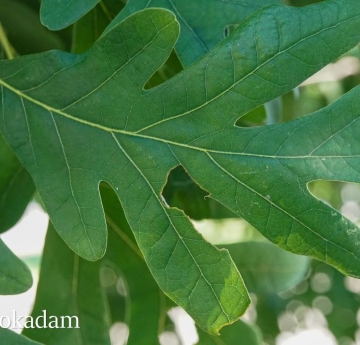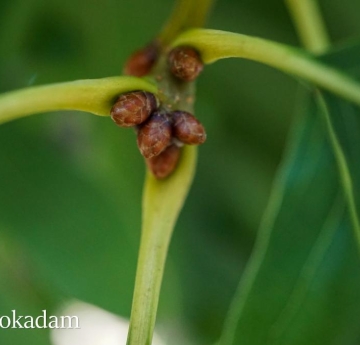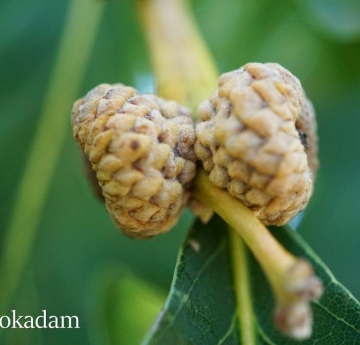Scientific name: Quercus alba
Common name: White oak
Native: Yes
Native range: Native to the eastern United States [1,2].
Distribution in North America: Click to view the USDA Plants Database page for Q. alba.
USDA Zones: 3A-8A [4]
Maximum age: May live up to 600 years [2].
Ecology: The white oak is home to a variety of gall-forming insects, and the acorns are eaten by birds such as jays, crows, woodpeckers, ducks, turkey, quail, as well as deer and small mammals [1,2]. It also hosts a number of native moths, including the luna moth (Actias luna), the io moth (Automeris io), and the cecropia moth (Hyalophora cecropia) [5].
Ethnobotany: The tree is attacked by multiple edible fungi, including Armillaria mellea and Armillaria tabescens - also known as honey mushrooms [1,2]. The wood is used for construction and woodworking, and the tree is a common feature of urban plantings [1]. Indigenous American groups use the white oak for a variety of medicinal, culinary and crafting purposes [3].
Eat the Planet: Oak Tree Acorns, A High Calorie Wild Edible
Eat the Weeds: Acorns - The Inside Story
In Defense of Plants: Red or White?
In Defense of Plants: Oaks - Insights into Evolution & Ecology
Native American Ethnobotany Database: Quercus alba L.
USDA: White Oak Plant Fact Sheet





